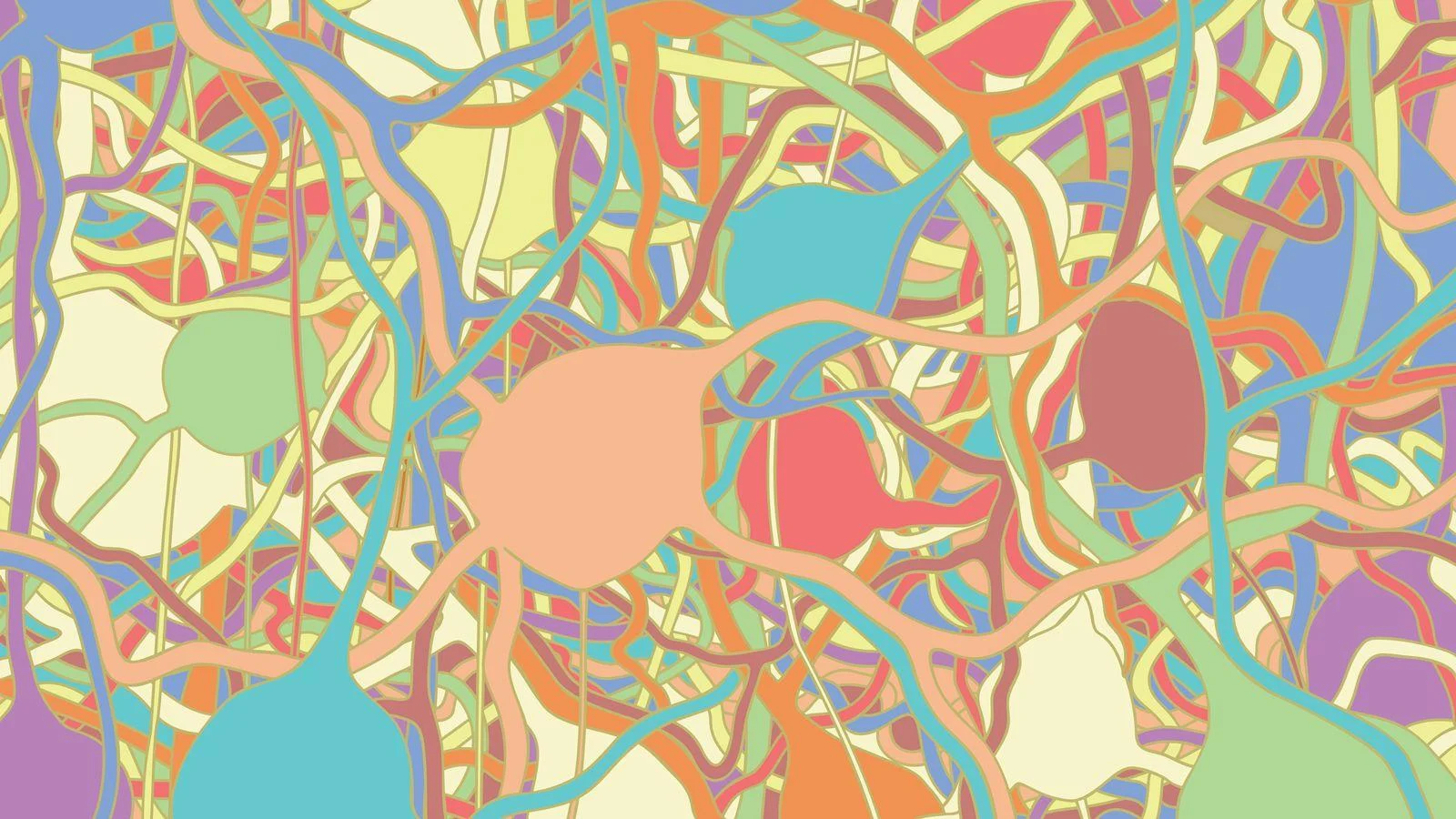The miracle is that the universe created a part of itself to study the rest of it, and that this part, in studying itself, finds the rest of the universe in its own inner realities. —-John Lilly
Human exist within a paradox: We conceive of ourselves as individuals yet spend our lives embedded in relationships that build, shape, and influence our brains.
Neurons have three sequential levels of information exchange that are called first, second, and third messenger systems. They are (1) the communication across the synapse that (2) changes the internal biochemistry of the cell, which, in turn, (3) activates mRNA (messenger ribonucleic acid, the material that translates protein into new brain structure) and protein synthesis to change cellular structure. It is through these processes that the brain changes in response to experience. These three levels of information exchange are also taking place between individuals. In other words, when we interact, we are impacting each other’s internal biological state and influencing the long-term construction of each other’s brains. This, in essence, is how love becomes flesh.
xvi
- each of our brains is a unique interplay of our convoluted evolutionary history and the millions of personal experiences that shape it throughout life.
- Through the biochemical alchemy of template and transcription genetics, experience becomes flesh, attachment takes material form, and culture is passed through a group and carried forward through time.
- The brain is a social organ of adaptation built through interactions with others. There are no single human brains – brains only exist within networks of other brains.
p6
- Fitness in Darwin’s terms is the ability to adapt to the environment.
p16
Whereas in other primates the sclera is dark to hide gaze direction, in humans, camouflage gave way to revealing the direction of our attention and possible intentions.
p19: Our powerful impulse to share information with each other led Benjamin Franklin to observe, “three can keep a secret, if two of them are dead.”
p24: The reactivation of trauma by seemingly random experiences or sensory cues from the external environment – even if we have protected ourselves with dissociation or amnesia – reflects the vulnerability of our brains to discontinuities of experience.
p29: Neurons are social by nature and depend on their neighbors for survival. If they aren’t sending and receiving messages from other neurons on a constant basis, they literally shrink and die. Most neurons have fibers, called axons, that become covered with myelin, which serves as an insulator that enhances axons’ firing efficiency. One way of measuring the maturity of a neural network is to measure its degree of myelination. Many neurons develop elaborate branches, called dendrites, that interconnect with the dendrites of other neurons. Thus, a second measure of neural development is the size and degree of dendritic branching in individual neurons.
p29: Neurons that fail to communicate with other neurons die off through a process called apoptosis. Paradoxically, a third way to measure brain development is by the decrease in the overall number of neurons, as survivors take over and form increasingly efficient networks. It turns out that the elimination of neurons that have not established positive connections is a vital component of the growth and development of the brain.
p30: Half the volume of the brain is made up of glial cells that play a role in the construction, organization, and maintenance of neural systems.
p30: Transcription controls the experience-dependent aspects of the brain’s development by allowing the brain to be shaped and reshaped by learning. The transcription of protein into neural structure via RNA accounts for the majority of the brain’s structure that is added after birth. It is through gene transcription that environmental stimulation allows for ongoing learning and adaptation. Thus, nature and nurture contribute to the building of the brain via the template transcription genetics.
p31: These specific combination of activated neurons involved in a particular function is known as its instantiation. Instantiations encode all our abilities, emotions, and memories and are sculpted and modified by experience. Once neural patterns are established, new learning relies on the modification of established instantiation patterns.
p32: In a process called long-term potentiation (LTP), excitation between cells is prolonged, allowing them to become synchronized in their firing patterns and organized into neural networks. Excitation also stimulates the transcription of RNA, resulting in the protein synthesis required for neuronal growth.
p34: The kinds of changes discovered in the adolescent brain (roughly 12-18 years of age) show a loss of the overall number of neurons (gray matter) with an increase in the number of myelinated fibers (white matter) connecting functional neural networks. (Enhanced efficiency and speed of communication among cortical areas and between cortical and subcortical structures ultimately lead to increased integration of brain functions located in diverse regions of the central nervous system.)
p40: Neurons that fire together wire together. Our ability to connect depends on complex and wide-ranging neural networks throughout our brains that have been shaped through millions of years of neurobiological evolution. It is to these systems and their abilities that we now turn our attention.
p44: The Orbital Medial Prefrontal Cortex (OMPFC) sits at the apex of the neural networks of the social brain. (These interconnections allow social information to be gathered from, and transmitted back to, all the sensory systems in order to be immediately employed to guide perceptions, actions, and interactions)
p46: The cingulate cortex is involved with cognitive and emotional integration as well as the activation, modulation, and coordination of motor circuitry.
p47: The insula is described as the “limbic integration cortex” because of its massive connections to all limbic structures and its feed-forward links to the frontal, parietal, and temporal lobes.
p47: Amygdala: a set of interconnected nuclei centrally involved in attention, learning, physiological arousal, and emotion.
P48: The Hippocampus: childhood amnesia is likely due to the slow developmental course of the hippocampus (which is in contrast to the Amygdala)
P49: The Hypothalamus: its various nuclei organize many bodily functions, such as temperature regulation, hunger, sexual behavior, and aggression. Stimulation of the hypothalamus by the BNST triggers arousal vigilance, and anxiety.
P50: The evolution of human intelligence and culture rests more on the expansion of sociality (imitation, theory of mind, and communication) than on the significance of anatomical and genetic changes (Roth & Dicke, 2005)
P55: The activation of the ventral striatum translates the anticipation of reward into a physical impulse to approach. In this way, those whom we find attractive exert what feels like a gravitational pull on us.
P63: While the increasing inhibitory ability of the left hemisphere has led to greater cognitive abilities, it also resulted in a capacity to separate mind, body, and emotions. Experiencing the world from high atop the left hemisphere led Descartes to equate human existence with thinking, much to the detriment of psychology and neurology.
P66: Abstract notions are tied to our bodies through metaphor, thus connecting our minds to the world through the experience of our bodies….in this sense we see that emotions derive ultimately from the physical self, we learn to access our bodily grid to locate ourselves within the world, and we ground the idea of our unique self within it.
P67: The left hemisphere appears biased toward positive (approach) emotions, whereas the right seems biased toward negative (withdrawal) emotions. States of stress, anxiety, fear, trauma, and pain all result in heightened activation in right-sided structures.
P67: positive feelings related to humor, social affiliation, and aesthetic responses have arisen as a function of an expanded neocortex (negative emotions are ore primitive than positive emotions.)
p100: I was fascinated to discover that skin contains two different types of sensory receptors: Some transmit information to the somatosensory cortex for identification and manipulation of objects, whereas others activate the insula, cingulate, and orbital medial cortex, connecting touch with social and emotional experience.
p102: The evolution of the cingulate provided us with the early infrastructure of connection, sharing, emotional attunement, and eventually the experience of self.
P106: The cingulate becomes activated when we, or those we love, experience physical pain as well as when we experience social exclusion. ACC activation (which can be decreased by acetaminophen) is greater when one is excluded by same-race others versus by individuals or another race, showing that these reactions are modulated by top-down cognitive processes, prior learning, and culture.
p109: Von Economo Neurons (VEN, aka spendle cells): largest and most abundant in humans, who, it is also supposed, have to process the most complex social information.



